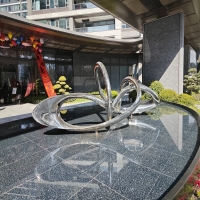Welcome to the website for landscape facilities products and knowledge.
What are the key differences in consumer expectations for landscape chairs in warm versus cold climates?
When it comes to landscape chairs, consumer expectations vary significantly between warm and cold climates. These differences are driven by practical needs, comfort preferences, and durability concerns.
In warm climates, consumers prioritize materials that resist heat and UV damage. Chairs made from teak, aluminum, or synthetic wicker are popular due to their ability to withstand prolonged sun exposure. Breathability is also crucial, with mesh or slatted designs allowing airflow to keep users cool. Light colors are preferred to reflect sunlight, reducing heat absorption. Additionally, quick-drying cushions and water-resistant fabrics are essential for humid or rainy conditions.
In contrast, cold climate consumers focus on insulation and weather resistance. Heavy-duty materials like powder-coated steel or treated hardwood are favored for their ability to endure snow, frost, and moisture. Cushions with thick, weatherproof covers provide warmth, while ergonomic designs accommodate layered clothing. Darker hues that absorb sunlight can make chairs feel warmer during chilly days.
Durability is a universal concern, but warm climates demand UV protection, while cold climates require frost-resistant construction. Understanding these nuances helps manufacturers and retailers cater to regional preferences effectively.
By addressing these climate-specific needs, brands can enhance customer satisfaction and longevity of their outdoor furniture offerings.
Related search:

Recommendation
Abstract art sculpture, stainless steel metal sculpture, large-scale water feature sculpture